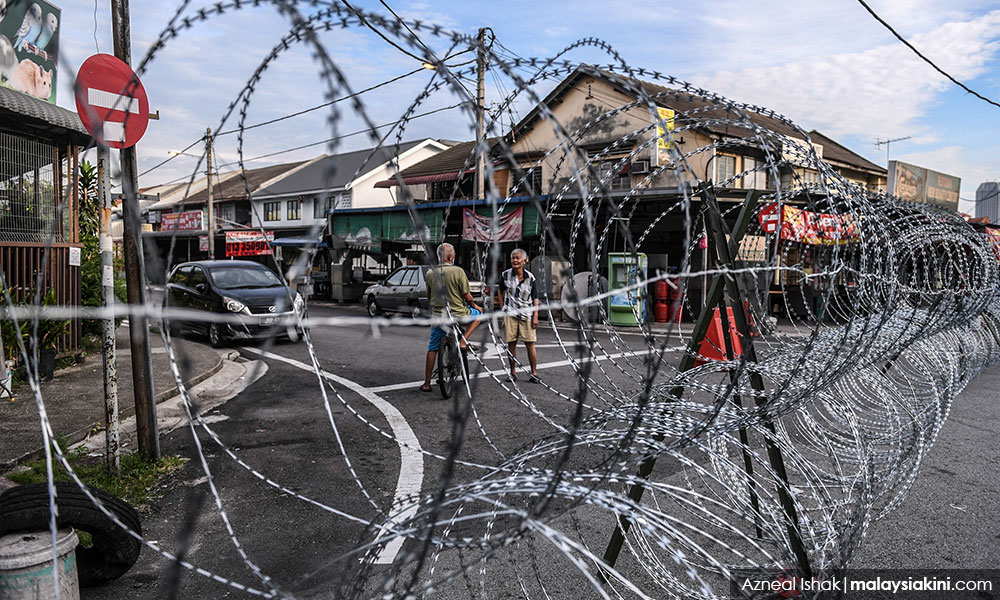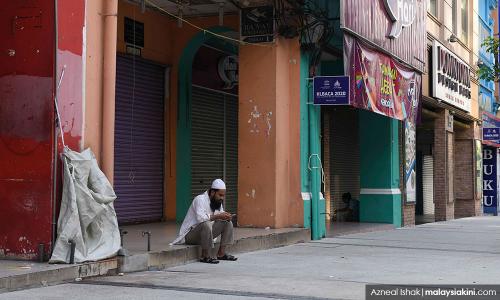LETTER | How Malaysia can get out of Covid-19 crisis
LETTER | The current state of the economy is making it difficult for small businesses and the M40 group to ride out the unending lockdowns. The economy needs to reopen, but work-from-home, online learning, and home-based learning need to be the default. That means all meetings and non-life threatening businesses must be conducted virtually.
If it is impossible to work from home, for example, the manufacturing and food and beverage sector, then only the minimum number of employees should be allowed to work at any one time, that is, in staggered shifts.
Multiple districts should be grouped together as one region, and travelling within the region should be allowed, but should not go beyond the region. The regional borders should be drawn based on the availability of essential life-supporting supplies (shopping malls, grocery stores). No form of entertainment should be considered essential. Desserts are not essential. Gyms are not essential. Crossing regions should only be allowed to access healthcare services.
Regional lockdowns should start three days before mass testing of the region begins, and will end when the region is fully tested to isolate the infected. During lockdowns, nobody will be allowed to leave home until the lockdown is lifted.
Simultaneously with regional lockdowns, mass testing is critical to end the lockdown as soon as possible. At least one person from each household must be tested.

Only those tested negative will be allowed to leave home for essential service or work. While waiting for the results, one week's worth of food supplies for the household should be provided if the household has suffered significant loss of income. Those tested positive will be required to self-quarantine, and two weeks' worth of supplies should be provided.
With a targeted mass testing approach, each region will be cleared of lockdown in a matter of days, and businesses may resume to potentially 50 percent, more than sufficient to sustain most people.
The vaccination programme needs to continue in a safe manner. Vaccination needs to be done in small community to prevent inter-district transmission. As testing is failing to catch up with positivity rate, I would say this is critical. Vaccination should be rolled out after mass testing has been completed and regional lockdown has been lifted.
Assuming a population of 33 million and three people per household, we have 11 million households, which is a huge number. Taking 10 million households for simplicity, we need to perform 10 million tests. At the current test rates of 50,000 per day (underestimation for simplicity, and we can do much more than this), that is 200 days.
If we do 150,000 tests per day (this will cover the entire Petaling Jaya region in one to two days), we can shorten the total duration to about 60 days, which is only two months. And out of the two months, each region will only enter into a lockdown for one to two weeks. So, Malaysia can get out of this mess in less than three months.
The first region to go into lockdown and mass testing should be those close to international borders and with huge foreign investment potential. The southern Johor region should be at the top of the list, as clearing that region will accelerate the re-establishing of cross-border travelling with Singapore.
Next up should be the high-density population areas, starting with Kuala Lumpur and Selangor, followed by other capital cities. The isolated rural regions, which are already considered low risk, will come last.
Now the question is, who is going to make the move? The current government? The opposition? Or do we need someone else to jump in?
The views expressed here are those of the author/contributor and do not necessarily represent the views of Malaysiakini.
RM12.50 / month
- Unlimited access to award-winning journalism
- Comment and share your opinions on all our articles
- Gift interesting stories to your friends
- Tax deductable
